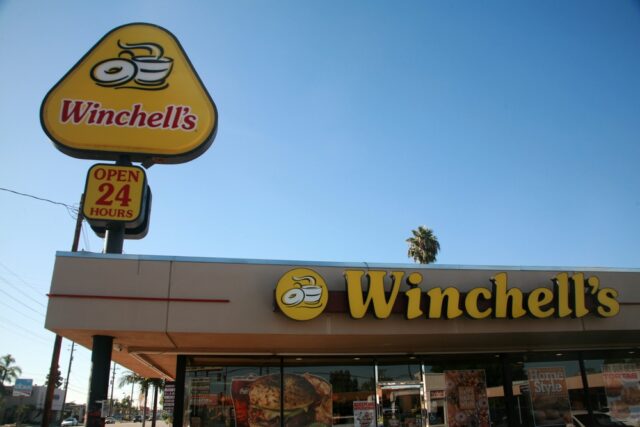
My favorite thing about a long flight is discovering movies I’d never heard of.
My most recent find is “The Donut King” (if you’re an 80s film geek like me, you just whispered “Of Chicago” under your breath. If not, never mind, moving on…)
“The Donut King”, at its core, is a tremendous underdog story. It focuses on Ted Ngoy, a Cambodian immigrant who fled the oppressive Khmer Rouge regime in the mid-1970s and made his way to Southern California. He was trained to make donuts at Winchell’s, which operated around 200 stores on the West Coast at its peak. He purchased his first shop, Christy’s Donuts, in 1977, eventually expanded to 50 locations, sponsored other Cambodian refugees, taught them to make donuts, and was ultimately responsible for a California donut empire so entrenched, it foiled Dunkin Donuts’ plans in the state for decades (it has only recently pushed hard into the Golden State).

Ted Ngoy learned to make donuts at Winchell’s before starting his own empire (Photo credit: mikeledray / Shutterstock.com)
It feels a bit like a Behind The Music episode – tragedy, triumph over tragedy, a rise, and fall. There are many lessons to be gleaned from “The Donut King”.
But as is very typical of me and my marketing/branding brain, I hyper-focused on one thing that happened in the 90-minute film.
The pink box.
Not every donut store today uses a pink box, but a pink box certainly has become synonymous with donuts. But in the 1980s, no donut stores used pink boxes, generally only white ones.
That is, until Westco, the company that supplied the boxes to Ngoy’s stores, offered up boxes made of leftover pink cardboard stock that happened to fit a dozen donuts perfectly. They were cheaper, meaning a few pennies saved per box meant big savings over time.
So, the pink donut box may have happened by accident, but it doesn’t mean your pink box needs to be an accident.

The pink box has become synonymous with donuts (Photo Credit: The Image Party/shutterstock.com)
Broca’s Area is the part of your brain that anticipates the predictable, and literally tunes out what it knows and expects. Stimulating Broca’s Area engages our excitable, surprise emotion. In the 80s, if you’d seen a white box every time you stopped for donuts, seeing another white box would be unremarkable. But a pink box would stimulate Broca and capture your attention.
The principle drives “The Purple Cow” by marketer Seth Godin. You’ve seen so many brown and black cows in your life, so when you see one it’s just another cow. But what would you do if you saw a purple cow on the side of the road? These days, you might stop and take a selfie with the cow, perhaps a TikTok upload, #PurpleCow of course.
Why?
Not because it’s a cow. Because it’s a purple cow. And only because you’ve never seen a purple cow before. If purple cows started showing up everywhere, it wouldn’t be remarkable anymore.

What, never seen a purple cow before? (Photo credit: Davide Rigon/shutterstock.com)
What is perhaps the greatest thing about the pink donut box is just how simple it is. It didn’t even require an increase in budget, it was cheaper! But it was different, so it captured attention.
When you’re brainstorming the next marketing idea, the next way to promote a song, the next video for social media, the next design for the app, you should think strategically about how it will benefit and grow your brand. But also consider, how will it stimulate Broca? How will it surprise? How will it be different?
What’s your pink donut box?
